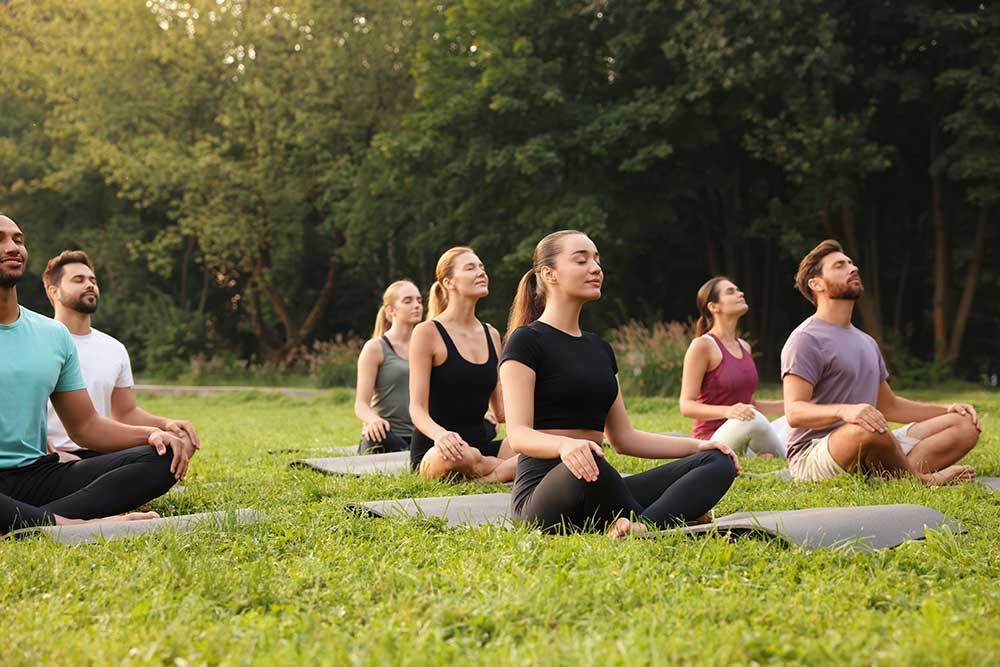How Yoga Benefits the Nervous System and Helps Release Trauma
Yoga is much more than just a physical practice; it’s a holistic approach to health that integrates the body, mind, and spirit. In recent years, yoga has gained significant attention for its ability to support mental health, reduce stress, and enhance emotional well-being. One of the most profound effects yoga has on the body is its positive impact on the nervous system, and its ability to help individuals release stored trauma from the body.
In this blog, we will explore how yoga benefits the nervous system and facilitates the release of trauma through movement, breath, and mindfulness.
The Nervous System and Yoga: A Deep Connection
The nervous system is our body’s communication network, controlling everything from basic functions like heart rate and breathing to complex emotions and stress responses. It’s divided into two main branches:
- Sympathetic Nervous System (SNS): The “fight or flight” system, activated during stress, danger, or excitement.
- Parasympathetic Nervous System (PNS): The “rest and digest” system, responsible for relaxation, recovery, and overall balance.
Yoga offers a unique way to balance these two systems, reducing the overactivity of the SNS and stimulating the PNS, which promotes deep relaxation and healing. Here’s how yoga supports the nervous system:
1. Activates the Parasympathetic Nervous System
Yoga, especially when paired with deep breathing techniques, helps activate the parasympathetic nervous system (PNS). Poses that focus on relaxation, such as forward folds and restorative poses, help calm the body and reduce stress. Slow, mindful breathing, such as deep diaphragmatic breathing or alternate nostril breathing, encourages the PNS to take over, reducing heart rate, lowering blood pressure, and decreasing the production of stress hormones like cortisol. This shift from fight-or-flight to rest-and-digest creates a profound sense of calm and restoration.
2. Regulates the Stress Response
Yoga’s emphasis on breathing (pranayama) is particularly beneficial for regulating the body’s response to stress. By focusing on slow, deep breaths, yoga teaches the body how to manage its physiological reactions to stressors. Research has shown that regular yoga practice can lower cortisol levels, reduce anxiety, and help individuals cope with emotional triggers more effectively.
3. Improves Emotional Resilience
Yoga encourages mindfulness—being present in the moment—by cultivating awareness of thoughts, sensations, and feelings. This mindfulness helps individuals develop emotional resilience by increasing self-awareness and self-regulation. When you practice yoga, you become more attuned to your emotions and bodily sensations, allowing you to better navigate difficult feelings and stressful situations.
4. Helps the Body Return to Balance
Yoga encourages balanced movement, which helps reset and align the body’s energy. Poses that stretch and strengthen the muscles support circulation, release tension, and help the body recover from imbalances caused by stress. The physical practice of yoga can also improve posture and body alignment, which has direct benefits on the nervous system’s efficiency and overall health.
How Yoga Releases Trauma Stored in the Body
Trauma is not only an emotional experience—it is stored in the body itself. When a person undergoes a traumatic experience, the body often responds with tension, tightness, and defensive postures. Over time, these physical responses become ingrained in the body, leading to chronic patterns of tension and discomfort. Yoga offers a way to release these physical blockages and help the body process and heal from trauma.
1. Promotes Mind-Body Connection
Yoga encourages deep awareness of bodily sensations, which helps us reconnect with areas of the body that may have been “shut down” due to past trauma. By slowing down and tuning into the present moment, yoga invites individuals to safely feel sensations that they might have repressed or avoided. This conscious attention to the body’s responses can help release trapped emotions and energy stored in the tissues, helping trauma to surface in a safe and controlled environment.
2. Encourages the Release of Stored Emotions
Certain yoga poses—particularly those that open the hips, chest, and shoulders—are believed to help release emotions that are stored in the body. For example, hip openers (like Pigeon Pose) are often linked with the release of stored emotions such as fear or sadness, while poses that expand the chest (like Cobra or Camel Pose) can help release grief or vulnerability.
During yoga practice, it’s not uncommon for people to experience emotional release, whether in the form of tears, anger, or a sense of deep relief. These emotional releases are not just psychological—they reflect the body’s physical processing of trauma and emotional stress. Yoga helps to unlock these deep-seated emotions by creating space in the body through movement and breath, allowing them to be felt, processed, and released.
3. Releases Tension from the Nervous System
Many trauma survivors hold tension in the muscles and connective tissue due to hyperarousal (the state of being constantly “on edge” or in fight-or-flight mode). Yoga helps release physical tension in the muscles through slow, deliberate movements and deep stretching. This can gradually relax the body’s habitual response to stress and provide a sense of freedom and relaxation.
Practices like progressive muscle relaxation (often integrated into yoga) encourage the gradual release of muscle tightness, helping to ease the body’s tension and reset its response to stress. As the body relaxes, the nervous system also begins to heal.
4. Safe Space for Vulnerability
Yoga provides a
safe space where people can experience vulnerability in a supportive environment. The practice encourages self-compassion and acceptance, which are vital for trauma recovery. Through mindfulness and deep breathing, yoga fosters a sense of safety within the body, allowing individuals to reconnect with themselves and their emotions in a gentle, nurturing way.

Best Yoga Practices for Trauma Release and Nervous System Support
To fully harness the benefits of yoga for trauma release and nervous system regulation, consider integrating these practices into your routine:
1. Restorative Yoga
Restorative yoga focuses on deep relaxation and passive stretching, allowing the body to release tension and trauma without strain. Poses like Supta Baddha Konasana (Reclining Bound Angle Pose) or Savasana (Corpse Pose) promote relaxation and help calm the nervous system, facilitating the release of deep-seated emotional blockages.
2. Vinyasa or Flow Yoga
Flow yoga, which involves moving through a series of postures linked with breath, can be particularly effective for releasing trauma stored in the body. The dynamic nature of Vinyasa yoga encourages circulation, promotes emotional expression, and helps regulate the nervous system.
3. Breathwork (Pranayama)
Incorporating breathwork into your practice is key to calming the nervous system. Techniques like Ujjayi breath (victorious breath) and Box breath can help reduce anxiety, increase mindfulness, and soothe the stress response. Deep, conscious breathing also creates space in the body, promoting relaxation and the release of tension.
4. Trauma-Informed Yoga
If you are specifically seeking to release trauma, consider practicing trauma-informed yoga, which involves working with an instructor who understands the unique needs of trauma survivors. This approach emphasizes creating a safe, non-judgmental space, offering modifications, and empowering the individual to listen to their body and work at their own pace.
Final Thoughts
Yoga offers a profound and gentle way to support the nervous system and facilitate the release of trauma stored in the body. By combining movement, breath, and mindfulness, yoga helps regulate the stress response, release emotional blockages, and restore balance to both body and mind.
Whether you're looking to reduce stress, release stored trauma, or simply reconnect with your body, yoga provides a powerful practice that promotes healing, balance, and self-awareness. If you're new to yoga, start slowly, and listen to your body’s needs—creating space for release, growth, and transformation.





